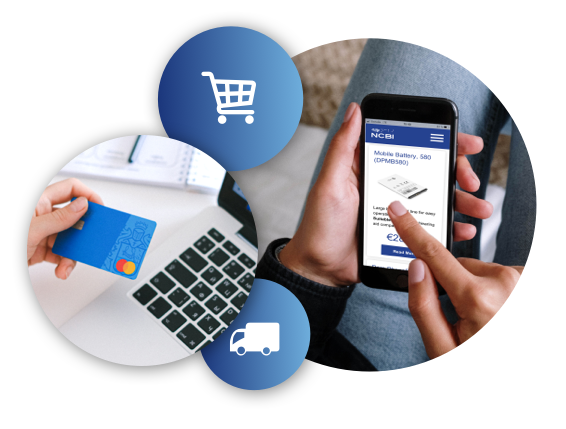
E-retail sales account for 14.1% (opens in a new window) of all retail sales on a global scale, and they are expected to reach an impressive 22% by 2023. Accessibility is a key feature for optimal success of e-commerce sites, yet it is often overlooked. Imbuing an e-commerce site with accessibility features not only ensures that it complies with official Web Content Accessibility Guidelines (WCAG 2.1), but also increases a business’ potential audience. If you are building a new e-commerce site or renovating an old one, make sure it is accessible to those with a range of disabilities – including people who are blind or visually impaired (opens in a new window), deaf, and/or cognitively impaired. Below you will find a few tips for making sure your e-commerce site is accessible to people with visual impairments.
 To make sure your online store is accessible (opens in a new window), you should read the WCAG 2.1 guidelines to discover specific suggestions for different disabilities – including visual, auditory and cognitive impairments. A study by D Green and colleagues, published in Value in Health (opens in a new window), estimated that the number of blind individuals in Ireland amounts to almost 13,000, so this is a huge audience that needs to be catered for. Of course, there are many more web users with visual impairments who can read text and see images with varying degrees of difficulty.
To make sure your online store is accessible (opens in a new window), you should read the WCAG 2.1 guidelines to discover specific suggestions for different disabilities – including visual, auditory and cognitive impairments. A study by D Green and colleagues, published in Value in Health (opens in a new window), estimated that the number of blind individuals in Ireland amounts to almost 13,000, so this is a huge audience that needs to be catered for. Of course, there are many more web users with visual impairments who can read text and see images with varying degrees of difficulty.
Ensuring Visual Acuity
To make your text more clearly perceived by an audience with visibility issues, bear in mind that some people need larger text in order to read. You can cater to all audiences by permitting users to change the font size of all text without zooming the entire interface. Font choice is likewise key: avoid those which are arty but hard to read. Opt for clear fonts like Courier and Times instead. You should also ideally allow your audience to change aspects such as style (underline, italics), capitalisation (some people find it easier to read all caps or small caps), interface size, leading (the space between lines in a block of text), and other aspects mentioned in the WCAG 2.1 rules.
Catering to Light and Contrast Sensitivity
Some audiences have photophobia or low contrast sensitivity (the inability to discern writing from its background). Your retail site should therefore cater to those with both conditions (opens in a new window) as much as possible. It should ideally contain high contrast combinations, but also enable users to set the background colour and text colour. Because very bright screens can be difficult or uncomfortable to read for those with photosensitivity, users should be able to adjust the brightness until they are comfortable.
Remembering Those with Field of Vision Issues

Shoppers on your site may have field of vision problems. For instance, they may have central vision or peripheral vision loss, which means that they cannot read an entire line of text (for instance, a product description) by simply looking at the screen. The WCAG guidelines provide instructions on how to help your audience track (move along lines of text) more optimally – for instance, by creating blocks of text that require the reader to scroll in only one direction. Vertical scrolling should be preferred over horizontal scrolling. Audiences should also be able to see text in one continuous block if they wish, instead of in multiple columns, because it can be difficult to move from the bottom of one column to the top of the next.
The WCAG 2.1 guidelines are the ideal starting point if you wish to create a more accessible site for people with visual impairments. Issues such as contrast, text size, and brightness are just three of many that need addressing. The guidelines go through various visual impairments and their needs, aiming to provide a complete accessibility guide for retail and other sites.
Written by Bianca Hilton 05/05/2021